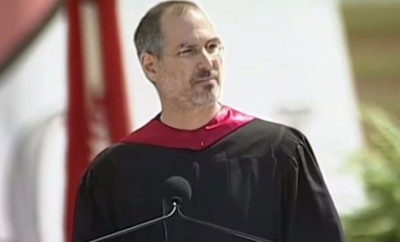
Warning! Creativity Can be Dangerous to your Profession
For the past three years I have been researching self-actualization—the psychology of self-actualization, the field of self-actualization, and Abraham Maslow who pioneered self-actualization. This research has allowed me to explore the processes for unleashing potentials, the first human potential movement (which disappeared in the 1990s), and the application of self-actualization for business, organizations, communities, and even (imagine this) politics. I have also studied the correlation of self-actualization to creativity. And the first thing that surprised me about this correlation is that, in the final analysis, they are essentially descriptions of the same thing.
Is that surprising? It was to me. Self-actualization and creativity is the same thing? Here’s what Maslow wrote. It comes as his opening statement in his best-selling book, Toward a Psychology of Being.
“My feeling is that the concept of creativeness and the concept of the healthy, self-actualizing, fully human person seem to be coming closer and closer together, and may perhaps turn out to be the same thing.” (1971, p. 55, quoted in Chapter 4, The Creative Attitude, written originally in 1963)
And his biographer, Colin Wilson, wrote this in New Pathways in Psychology about him:
“Maslow’s observation that all self-actualizers are creative—sometimes artistically or scientifically, sometimes in more down-to-earth ways; but always creative.” (p. 169)
Creativity and Self-Actualization
Could creativity and self-actualization really be the same thing!? How could that be? The answer is that it takes creativity to make great ideas real and potentials actual in your everyday life. So self-actualizing people are creative people who first use their creativity to actualize themselves, their gifts, their potentials. They create new ways of being, new ways of seeing the world, new products, and so on. So the self-actualizing process is the essential creative process and creativity enables us to self-actualize.
Every child is born creative because it is our nature. It is innate. Creativity is for us humans what instincts are for animals. So whereas they have specific programs in their DNA telling them what and who they are, what to do, how to live, etc., we have consciousness. We have awareness by which we create and invent our programs. And we have a special kind of awareness—self-reflexive consciousness. This means we not only think, but we think about our thinking. We not only feel, but we feel about our feelings. And it is this self-reflexiveness that enables us to choose and create our thoughts, ideas, beliefs, understandings, decisions, identities and a million other things.
And, of course, all of that leads to different cultures, beliefs, understandings, models, and programs for how to be human. No wonder then that we create and can re-create ourselves. Such freedom! Such creativity! Such range of choices and options! So for this reason, creativity is innate and an essential part of human nature.
Now doesn’t all of this sound wonderful, exciting, and thrilling? Doesn’t all of this give you goose bumps and thrills and make you want to have a peak experience of creativity right now? Well, before you do, let me issue a warning about the dangers of creativity so that you know what you’re getting into.
The Danger of Creative Self-Actualization
Danger? Warning? What’s so dangerous about coming up with new ideas, new products and services? How could this ultimate human power of choosing our ideas and beliefs be dangerous?
I’ll tell a little of my own story. Maybe that will give you a good scare. Or laugh! Anyway, I’m now and I suppose have always been somewhat creative. When I was 16 my younger brother, Steve, could take apart a car engine and put it back together again, clean, polished, and better than ever. Not me. I could take it apart, but putting it back together again? Kiss that goodbye! While I was attempting to do that, my mind was busy thinking other things, with devious thoughts: How else could this go back together? What else could I do with this? Why do we need that?
Back then my conclusion was that he was smart about mechanical things, and I was not. Today I recognize that he was creative with mechanical things— that was his gift and passion and my aptitude was with people, language, patterning, and psychology.
When I went off to university, I studied history and language, biblical languages, Greek and Hebrew and when it was all over, I had a degree that was only good for one thing – being a minister. So I tried that one out. Actually, being young and naive I was quite passionate about “saving the world.” The only problem was that when I entered the ministry I thought the job description was “Find truth and share it.” It was several years later that I discovered the real job description, “Tell us what we already know and believe and help us feel smugly comfortable and righteous.”
Did I do that? No way. Following what I thought was the job description, I went down the path of the former and kept running into conflict. And that’s when my creative mind started really getting me into trouble. I began questioning the things I had learned. I wanted evidence. I wanted to test out what I had been taught and to find “truth.” So when I learned something new and changed my mind about something, I made the mistake of sharing it. Well, okay, in those days I didn’t just “share” it, I proclaimed it as the next Great Truth that would Save the World. (Yes, I was quite sure of myself in those days!)
So I got fired. Not once, not twice, not three times, but five times. And all in five years. Each year, end of contract, and the message—you can just move on now. At first I knew it was them! Slow, dull witted, unbelievers, hypocrites, I had all kinds of words for them. By the third time I began wondering, “Is there a pattern here?” And by the fifth, I pretty well knew the truth, “It’s me. My talents of stirring things up, changing things around, coming up with new ideas, new ways of expressing things, new suggestions—and my style was just not appropriate to what these people needed or wanted.”
What was a natural creative exploration of creativity, sorting for differences and wanting to innovate whole new paradigms overnight (I was pretty impatient in my 20s)—while a gift—was also a danger. It got me in trouble. It kept me in trouble.
My next profession was the world of psychology—counseling to be specific. Why did I go there? Because I needed it! I needed a balancing to my creativity and I sought that by trying to understand myself and ultimately to create myself so that I could more effectively handle my gifts and tendencies. So receiving therapy and experiencing the power of it from the inside-out, I entered into that field. So back to university, more studies, more learnings.
But then back out in real life, I found myself moving constantly. I moved from Freud to Jung, Adler, then TA (transactional analysis), Cognitive-Behavioural, etc. With each model I encountered, I delved into it thoroughly, fully exploring what it could do to find its limits about what it could not do. Looking back I don’t know how my clients handled me. My heart was good. I only wanted the very, very best for them and I wanted it for them quickly (still pretty impatient throughout my 30s) and I wanted it to work for them each and every time.
In my mid-30s I came upon NLP which filled in the details of the various models in a really exciting way, but what really got me going was its focus on the structure of experience. That is, above and beyond tools for making generative changes, NLP provides a meta-analysis of the very forms and processes by which one could figure out how any particular experience worked. Now I was home! Now I could create with any and every client a model of their unique personal and individual experience.
And that was so exciting that I was soon using these tools for model-making myself. In 1994 I created the Meta-States model to explain and work with self-reflexive consciousness, then came the Mind-Lines model for language, the Matrix model, and many others. So my profession continued to change again and again, therapist to trainer to modeller.
So creativity has been really, really dangerous to any semblance of a single profession over the years. When I modeled business I created some businesses (a publishing business, a real estate business, etc.) when I studied wealth creation, I took on the role of an entrepreneur. When I modeled self-reflexivity and writing, I took on writing articles and books.
So if you’re interested in creativity, in self-actualizing, and the creativity of actualizing your inmost gifts, talents, and potentials—get ready for change, lots of change, pervasive change. Get ready for your world to be regularly turned upside down. The self-actualizing life is like that—its focus is on becoming who you can become so you can be more and more fully you. And that means you’ll be less able to just conform, fit into someone’s mould. It means you’ll be more authentic, more congruent, and more living on the edge of the next level of experience and competency that’s available to you.
So be warned and be surprised and delighted as peak experiences and peak performances become more regular in the adventure of life! The truth is that as you actualize your best gifts and dispositions, you will be creating yourself—your life, your style, your uniqueness. And because creativity is inside-out, as you do this, it makes you more creative in all of life. It makes you more of a creative problem-solver and more creative in the artistry of your life.
In the context of business, it gives you a real edge on the competition as it enables you to think creatively about new possibilities, about trends, and changes in the marketplace. And from there it empowers you to flexibly adapt to the changing trends. Self-actualization in its final analysis is inside-out creativity. It enables you to be creative in your very being—in your thinking, emoting, speaking, behaving, and relating. And that leads to creative products and services, which in turns leads to innovative contributions that leaves your mark on people and on the world.
Given all that, here’s to your highest and best as a creative person!







